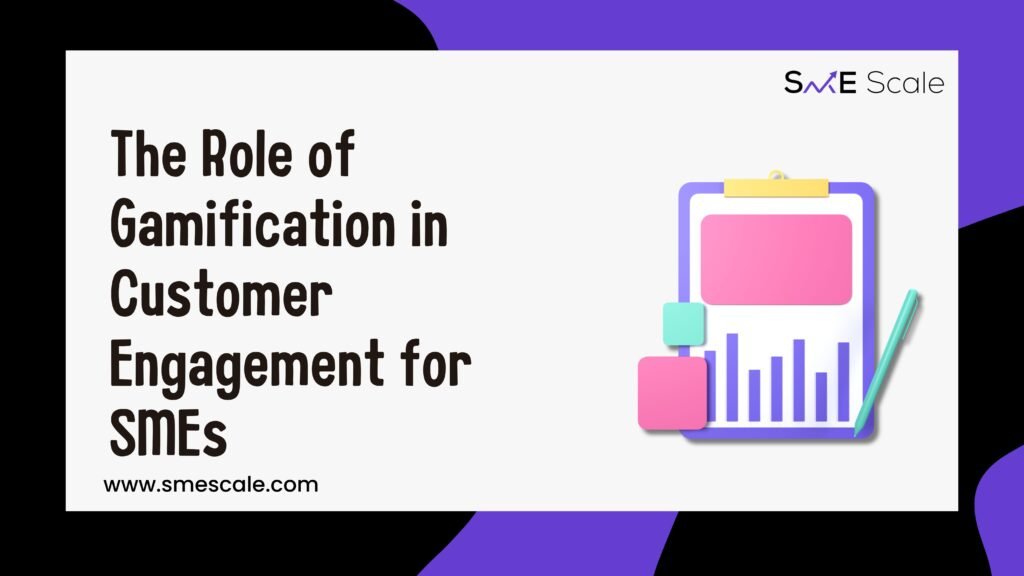
In the fast-evolving world of business, customer engagement has become a key differentiator between successful SMEs and those that struggle to thrive. One of the most innovative and effective strategies for enhancing customer engagement is gamification. Gamification involves incorporating game-like elements into business processes, products, or services to create a more engaging and interactive experience for customers. For SMEs, this can be a powerful tool to foster loyalty, increase customer retention, and stand out from competitors.
Why Gamification Works for SMEs
At its core, gamification taps into the basic human desire for reward and competition. By offering challenges, rewards, leaderboards, and achievements, businesses can encourage their customers to engage more deeply with their brand. For SMEs, where building strong relationships with customers is crucial, gamification presents an opportunity to increase both customer satisfaction and brand loyalty.
The Psychology Behind Gamification
From a psychological perspective, gamification triggers several key behaviors:
Intrinsic Motivation: Gamification taps into the human desire for achievement and mastery. When people complete tasks and receive rewards (points, badges, discounts), they feel a sense of accomplishment, driving them to continue engaging.
Social Validation: Leaderboards and community-based challenges encourage customers to compete and share their achievements. This builds a sense of community around the brand, which fosters social proof and motivates others to participate.
Positive Reinforcement: The use of rewards like discounts, free products, or exclusive access serves as positive reinforcement, keeping customers engaged in the long run.
Implementing Gamification: A Step-by-Step Approach
SMEs can easily implement gamification strategies by focusing on a few key elements:
Set Clear Objectives: Decide what you want to achieve with gamification. It could be to increase customer loyalty, encourage repeat purchases, or boost engagement on your website or social media platforms.
Incorporate Rewards: Rewards can range from points, badges, and discounts to exclusive content or VIP access. Customers should feel that their participation in the gamification process is worth the effort.
Leverage Leaderboards: Adding competitive elements like leaderboards helps customers compare their progress with others. This can motivate them to engage more, whether it’s accumulating more points or making more purchases to stay on top of the leaderboard.
Keep It Simple: Gamification should be easy to understand and participate in. Overly complex systems can discourage customers rather than engage them.
Track and Adjust: As with any strategy, it’s important to track the success of your gamification efforts. Use analytics to measure engagement, retention, and conversion rates, and be ready to make adjustments as needed.
Real-Life Case Study: Starbucks Rewards Program
A great example of gamification done right is the Starbucks Rewards program. While Starbucks is a large brand, the principles behind its success are easily applicable to SMEs.
Starbucks uses gamification to keep customers coming back by rewarding them for purchases. Customers earn “stars” for each transaction, which they can redeem for free drinks or food. The program also includes tiers, where higher levels unlock more exclusive rewards and privileges. By including special promotions like “Double Star Days,” Starbucks incentivizes customers to engage more frequently, driving repeat business.
Key Elements of Starbucks’ Gamification Strategy:
Points System: Customers earn stars based on their spending, which encourages them to purchase more frequently to accumulate points.
Reward Tiers: Higher tiers offer better rewards, motivating customers to spend more to unlock them.
Exclusive Offers: Personalized offers and promotions create a sense of exclusivity and make customers feel valued.
This system works because it plays into basic psychological drivers: customers want to feel like they are progressing (moving through reward tiers), and they appreciate the tangible rewards they receive for their loyalty.
How SMEs Can Apply These Lessons
While SMEs may not have the scale of Starbucks, they can still implement similar strategies to engage their customers through gamification:
Customized Loyalty Programs: SMEs can create loyalty programs that reward customers for making repeat purchases, sharing content on social media, or referring new customers. Even a simple points-based system can be effective in encouraging repeat business.
Engagement Challenges: For example, a local fitness studio could implement a challenge where customers earn badges for attending classes regularly or trying different workouts. This can encourage customers to explore more services and stay engaged.
Seasonal or Event-Based Gamification: Seasonal promotions, such as holiday-themed challenges or special events, can boost engagement during key times of the year. A small online retailer, for instance, could create a “holiday gift challenge,” where customers unlock discounts after making a certain number of purchases.
Conclusion
Gamification is a powerful strategy that SMEs can leverage to enhance customer engagement and build lasting relationships. By incorporating game-like elements such as points, rewards, and challenges, businesses can tap into the psychology of human behavior—creating a sense of accomplishment, competition, and social belonging. As seen with the success of Starbucks Rewards, even small, incremental rewards can make a big difference in customer retention and loyalty.
For SMEs, the key is to keep it simple, make the experience fun, and ensure that the rewards offered are valuable to the customer. By doing so, they can turn one-time buyers into loyal, repeat customers, driving long-term business growth.


